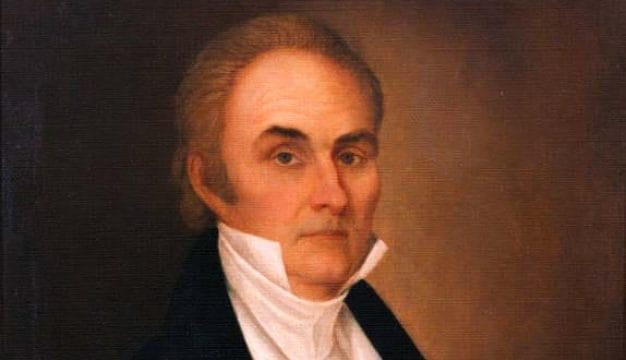Robert Van de Graaff
 Robert Van de Graaff
Robert Jemison Van de Graaff (1901-1967) was an Alabama-born physicist who developed an electrostatic generator, named for him, that accelerated subatomic particles for use in nuclear physics research. He also co-founded the High Voltage Engineering Corporation, served as the company's chief physicist and chief scientist, and conducted important research in nuclear physics throughout his life. Researchers have used Van de Graaff particle accelerators since the 1930s to obtain information about nuclear disintegrations and reactions and to develop sophisticated theories of the structure of atomic nuclei.
Robert Van de Graaff
Robert Jemison Van de Graaff (1901-1967) was an Alabama-born physicist who developed an electrostatic generator, named for him, that accelerated subatomic particles for use in nuclear physics research. He also co-founded the High Voltage Engineering Corporation, served as the company's chief physicist and chief scientist, and conducted important research in nuclear physics throughout his life. Researchers have used Van de Graaff particle accelerators since the 1930s to obtain information about nuclear disintegrations and reactions and to develop sophisticated theories of the structure of atomic nuclei.
Van de Graaff was born in Tuscaloosa, Tuscaloosa County, on December 20, 1901, to Adrian Sebastian Van de Graaff, an attorney and judge, and Minnie Cherokee Hargrove Van de Graaff. He attended Tuscaloosa public schools. Coming from an athletic family, Van de Graaff was severely injured playing football his senior year, curtailing his ability to play competitively. His three brothers, however, went on to notable careers playing for the Crimson Tide at the University of Alabama (UA). William was the first football player from the school to be named an all-American. A gifted athlete, brother Coleman was also a World War I Army veteran for whom Van de Graaff Field (present-day Tuscaloosa Regional Airport) was named in 1941. Brother Adrian played football for Alabama and also served in World War I. Sister Cherokee married John Asa Rountree Jr., who was director of aeronautics in Alabama and whose father was instrumental in the Good Roads Movement.
Robert van de Graaff attended UA and earned a bachelor's degree in mechanical engineering in 1922 and master's degree in mechanical engineering in 1923. After graduation, he spent a year as a research assistant for the Alabama Power Company and then enrolled at the Sorbonne, in Paris, France. In 1925, after winning a Rhodes Scholarship, he transferred to Oxford University and earned a second bachelor's degree in 1926 and a doctorate in 1928, both in physics. While at Oxford, Van de Graaff became acquainted with the work of New Zealand physicist Ernest Rutherford, considered the father of nuclear physics. Van de Graaff developed an interest in accelerating atomic particles to very high speeds for use in disintegrating the nuclei of atoms, a process that would enable scientists to study the nature of individual atoms. He then conceived of a process to deposit electrical charges on a moving belt and then accumulate those charges inside a hollow metal sphere.
In 1929, Van de Graaff, now a National Research Fellow at the Palmer Physics Laboratory at Princeton University in New Jersey, began developing a device for this purpose with the assistance of fellow scientist Nicholas Burke. Now known as the Van de Graaff generator, it consists of a long vertical hollow column with a moving belt inside and a dumbbell-shaped sphere at the top of the column that holds the electrical charge from the belt. His first electrostatic generator produced 80,000 volts. In 1931, he became a research associate at the Massachusetts Institute of Technology (MIT) and an associate professor three years later. That November, at the first meeting of the American Physical Society, he demonstrated a model that produced more than one million volts.
 Van de Graaff Generator Patent
Working with John G. Trump and William W. Buechner, both of MIT, Van de Graaff improved his device to obtain higher voltages, more consistent particle beams, and a smaller design. In 1932, he built a larger version consisting of two polished aluminum spheres mounted on insulating columns. In 1935, Van de Graaff, Karl T. Compton, and MIT vice president Vannevar Bush patented the design. His continuing work led to later generators that could produce particles with more than five million volts. Van de Graaff married Catherine Boyden in 1936, and they had two sons.
Van de Graaff Generator Patent
Working with John G. Trump and William W. Buechner, both of MIT, Van de Graaff improved his device to obtain higher voltages, more consistent particle beams, and a smaller design. In 1932, he built a larger version consisting of two polished aluminum spheres mounted on insulating columns. In 1935, Van de Graaff, Karl T. Compton, and MIT vice president Vannevar Bush patented the design. His continuing work led to later generators that could produce particles with more than five million volts. Van de Graaff married Catherine Boyden in 1936, and they had two sons.
Van de Graaff contemplated a number of applications for his machine, particularly bombarding heavy atoms, like uranium and thorium, with protons. He thought that by doing so, these already unstable atoms might disintegrate into smaller atomic particles or might transform into new manmade elements (those with atomic numbers higher than 92) if their nuclei captured protons. In 1937, the Harvard Medical School first used his machine to produce X-rays for irradiating cancer tumors. Later in his career, Van de Graaff developed methods to accelerate uranium atoms and then use them to bombard other uranium atoms, creating uranium ions with up to 50 electrons fewer than those of a normal uranium atom for use in highly accurate calculations of atomic properties.
During World War II, Van de Graaff directed the High Voltage Radiographic Project, sponsored by the federal Office of Scientific Research and Development. In this position, he adapted his electrostatic generator for precision radiographic examination of U.S. Navy ordnance. During the 1950s, he invented the insulating-core transformer, which produced high-voltage direct current, using magnetic fields to accelerate particles instead of electrostatic charging. In 1946, Van de Graaff, Trump, and British engineering professor Denis M. Robinson established the High Voltage Engineering Corporation (HVEC), where he served as the company's chief physicist and as later chief scientist. The following year, the company began its manufacturing operations and became a leading supplier of particle accelerator systems used in cancer therapy, radiography, and nuclear structure studies. He resigned from MIT in 1960 but continued his research in nuclear physics at HVEC until his death in Boston, Massachusetts, on January 16, 1967. By this time, there were more than 500 Van de Graaff particle accelerators in more than 30 countries.
During his professional life, Van de Graaff published numerous scientific papers and received seven patents. In 1935, he was elected a Fellow of the American Academy of Arts and Sciences. He received several honorary degrees and awards, including the 1947 Duddel Memorial Medal of the Physical Society of Great Britain and the 1966 Tom W. Bonner prize of the American Physical Society.
His boyhood home in Tuscaloosa, known as the Jemison-Van de Graaff Mansion, was constructed between 1859 and 1862 by state senator Robert Jemison Jr., a great grandfather on his mother's side. The home is notable for its Italianate architecture and was documented by the Historical American Buildings Survey in the 1930s and added to the National Register of Historic Places in 1972.
Further Reading
- Bailey, Carl L., and John H. Williams. Techniques of Particle Energy Control with Van de Graaff Accelerators. Washington, D.C.: National Academy of Sciences, National Research Council, 1952.
- Livingston, M. Stanley. Particle Accelerators: A Brief History. Cambridge, Mass.: Harvard University Press, 1969.



